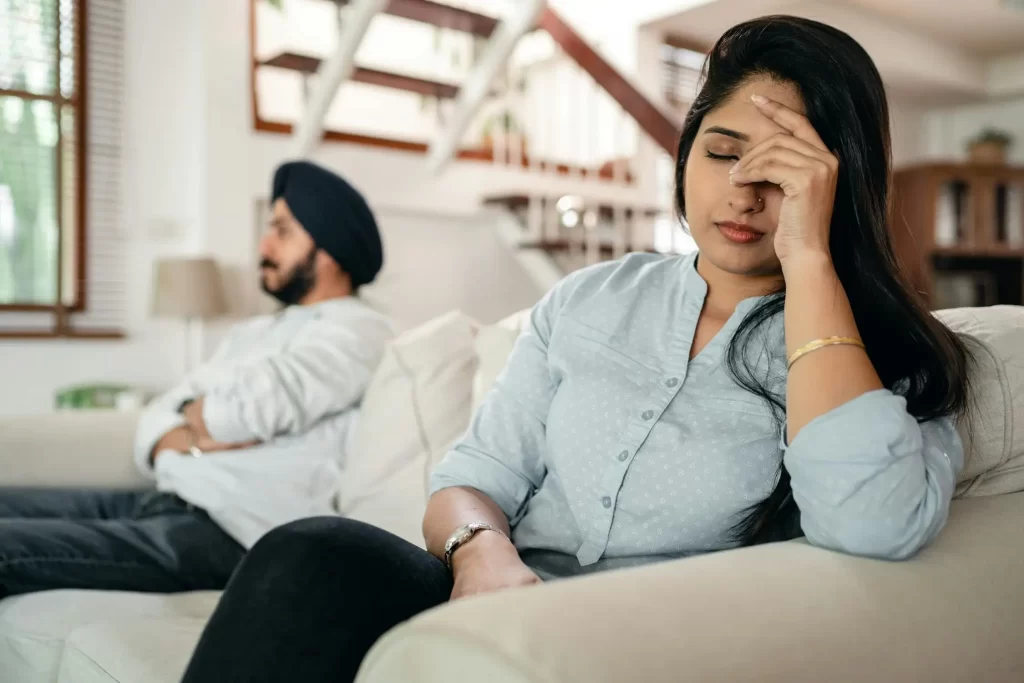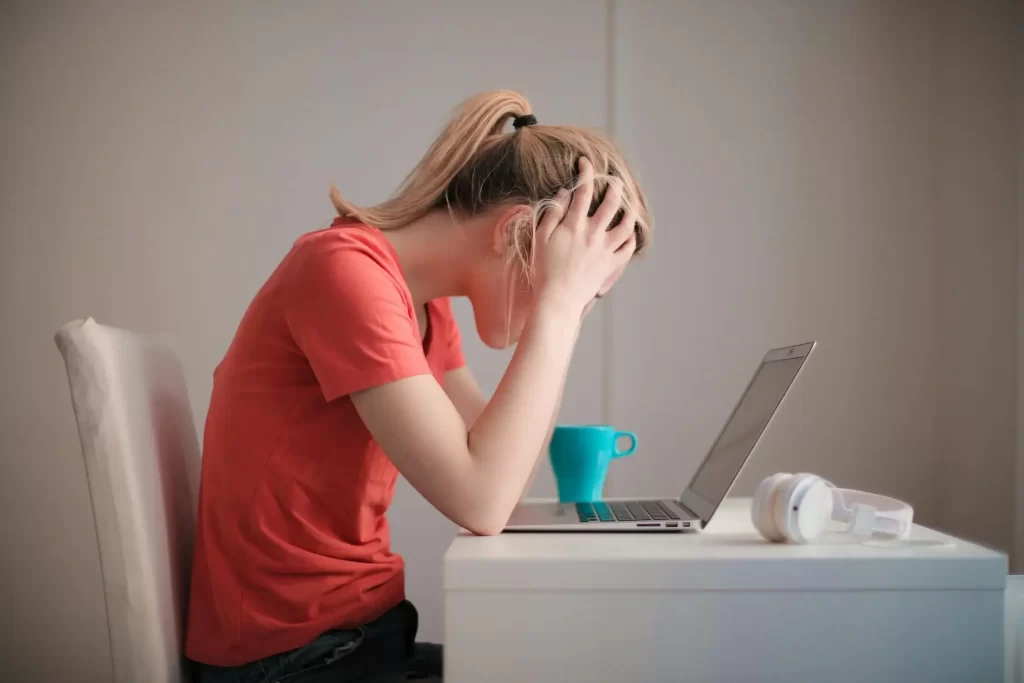As a therapist who is passionate about supporting women’s mental health, I have seen firsthand how anxiety manifests differently in men and women.
While anxiety is a universal experience, the biological and psychological differences between the sexes can influence not only how it is felt but also how it is expressed and managed.
Understanding these differences is crucial in providing tailored care and support.
Biological Differences in Anxiety: Hormones and the Brain
One of the primary biological factors contributing to differences in anxiety between men and women is the role of hormones. Women are more likely to experience anxiety disorders, which can be partly attributed to fluctuations in hormone levels throughout their lives.
Estrogen and progesterone, which play significant roles in the menstrual cycle, pregnancy, and menopause, can influence brain chemistry and mood regulation.
During the menstrual cycle, especially in the premenstrual phase, many women experience heightened anxiety due to changes in hormone levels.
Similarly, pregnancy and postpartum periods can bring about significant hormonal shifts, leading to increased vulnerability to anxiety and other mood disorders.
The hormonal changes during menopause can also trigger anxiety, adding another layer of complexity to women’s mental health.
In contrast, men typically have higher levels of testosterone, which is often associated with a protective effect against anxiety.
Testosterone can enhance stress resilience and reduce the likelihood of developing anxiety disorders. While this doesn’t mean that men are immune to anxiety, their experiences may differ in intensity and frequency.

Psychological Differences: Socialization and Expression
Psychologically, the way men and women are socialized plays a significant role in how anxiety is perceived and expressed.
From a young age, women are often encouraged to be more in touch with their emotions and to express vulnerability. This can lead to a greater awareness of their anxiety, but it also means that women might be more likely to seek help when they need it.
However, this awareness comes with its own set of challenges. Women are often more prone to rumination—a tendency to dwell on negative thoughts—which can exacerbate anxiety.
The societal pressures on women to balance multiple roles—such as career, family, and social obligations—can also contribute to feelings of overwhelm and anxiety.
Men, on the other hand, are often socialized to be stoic and to suppress their emotions, which can make it harder for them to recognize and acknowledge their anxiety.
This suppression can lead to different expressions of anxiety, such as irritability, anger, or physical symptoms like headaches or gastrointestinal issues, which are often mistaken for other conditions.
Anxiety and Gender-Specific Stressors
Women are also more likely to experience anxiety due to gender-specific stressors. These can include issues like gender-based discrimination, sexual harassment, and the pressures of societal beauty standards.
The mental load of caregiving, which disproportionately falls on women, can also contribute to anxiety.
Men may face anxiety related to societal expectations around masculinity, such as the pressure to be the primary breadwinner or to hide emotional vulnerabilities.
These expectations can create a barrier to seeking help, leading to untreated anxiety and its potential escalation into more severe mental health issues.

Physiological Responses to Anxiety
While there are often psychological and biological differences in the presentation of anxiety between men and women, the way our bodies react to anxiety often presents in similar ways.
- Increased Heart Rate: One of the most noticeable physical symptoms of anxiety is an increased heart rate. This occurs because the body is preparing to either fight off a threat or flee from it. The heart pumps more blood to the muscles to prepare for action.
- Rapid Breathing: Anxiety often leads to rapid, shallow breathing. This is the body’s way of getting more oxygen to the muscles. However, this can also lead to feelings of lightheadedness and further increase anxiety.
- Muscle Tension: When anxious, muscles tend to tighten. This tension can result in headaches, neck pain, and back pain, which can perpetuate the cycle of anxiety.
- Sweating: Sweating is another common physiological response to anxiety. It helps cool the body down in preparation for physical exertion.
- Digestive Issues: Anxiety can significantly impact the digestive system, leading to symptoms like nausea, stomachaches, and changes in appetite.
- Dizziness: The combination of rapid breathing, increased heart rate, and muscle tension can lead to dizziness or a sense of being lightheaded.
Coping Strategies for Anxiety
Understanding the physiological responses to anxiety can help us develop effective coping strategies. Here are some techniques that I often recommend to my clients:
- Breathing Exercises: Deep, slow breathing can help counteract the rapid, shallow breathing associated with anxiety. Techniques such as diaphragmatic breathing or the 4-7-8 method can promote relaxation and reduce physiological arousal.
- Progressive Muscle Relaxation: This technique involves tensing and then slowly relaxing different muscle groups in the body. It helps reduce muscle tension and promote a sense of calm.
- Mindfulness and Meditation: Mindfulness practices can help individuals stay present and reduce the tendency to ruminate on anxious thoughts. Meditation, in particular, has been shown to reduce stress and improve overall well-being.
- Physical Activity: Regular exercise can help reduce anxiety by releasing endorphins, which are natural mood lifters. Even a short walk can make a significant difference in how we feel.
- Healthy Diet: Eating a balanced diet can help stabilize blood sugar levels and improve overall physical health, which can, in turn, reduce anxiety.
- Sleep Hygiene: Good sleep is crucial for managing anxiety. Establishing a regular sleep routine and creating a restful environment can improve sleep quality and reduce anxiety symptoms.
- Therapeutic Techniques: Cognitive-behavioral therapy (CBT) is particularly effective for anxiety. It involves identifying and challenging negative thought patterns and developing healthier ways of thinking and behaving.
- Social Support: Talking to friends, family, or a therapist can provide emotional support and reduce feelings of isolation. Sometimes, simply sharing your concerns can alleviate some of the burdens of anxiety.

Supporting Women’s Mental Health
While anxiety is a common experience across genders, the way it is experienced and managed can differ significantly between men and women.
Understanding these biological and psychological differences is key to supporting women who struggle with anxiety.
Women need to be empowered to recognize the signs of anxiety, understand its triggers, and seek support without shame. This involves not only individual therapy but also fostering supportive environments at home, work, and in the community.
As a therapist, my approach is to create a safe space where women can explore their anxieties without judgment. This involves validating their experiences, helping them develop coping strategies tailored to their unique needs, and encouraging self-compassion.
It’s also important to address the external factors contributing to anxiety, such as societal pressures, and to work towards building resilience in the face of these challenges.
By acknowledging and addressing these differences, we can better support those struggling with anxiety and empower them to lead healthier, more fulfilling lives.
Remember, managing anxiety is a journey, and it’s okay to seek help along the way. With the right tools and support, it is possible to lead a fulfilling and balanced life despite anxiety.




